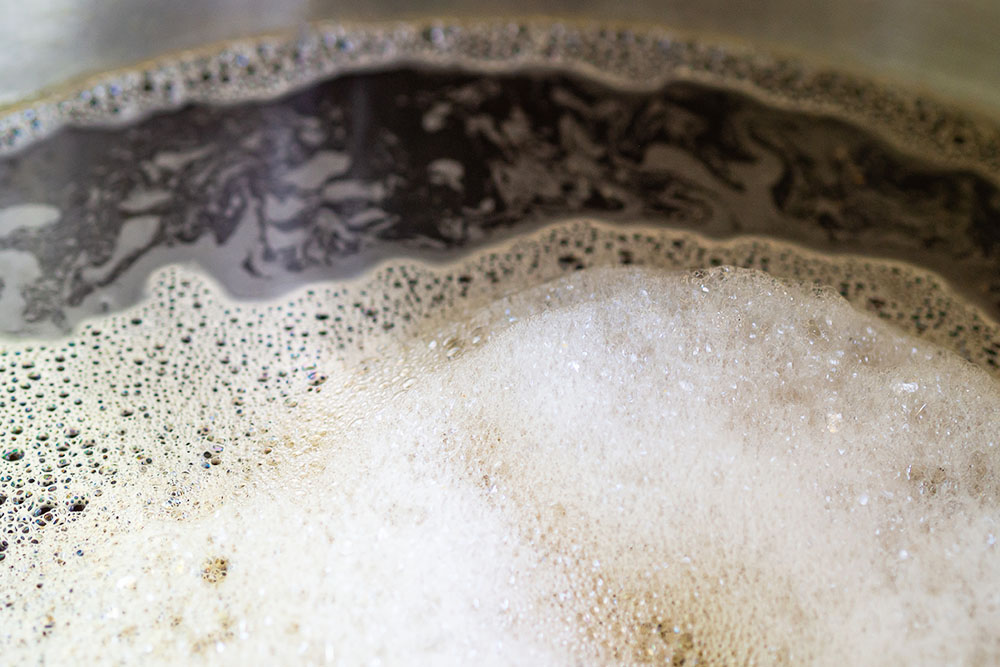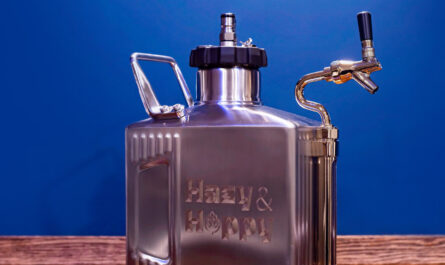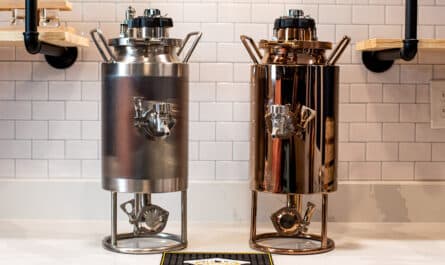Yeast needs oxygen to do its job well. More oxygen in your wort will lead to a better overall fermentation. Adequate oxygen levels ensure yeast grow and reproduce during fermentation. This will prevent stressed yeast. Stressed yeast leads to off-flavors. Inadequate oxygen levels in wort can also cause poor attenuation. Avoiding these pitfalls will ultimately lead to better quality beer. A simple step that goes a long, long way.
When To Aerate Wort
Oxygen plays a delicate role in beer. It’s essential for fermentation but should be avoided up until that point and afterward. Wort should only be aerated after it’s been cooled down to pitching temps. Introducing oxygen to hot wort is called hot-side aeration, and can be responsible for introducing undesirable compounds in your final product. My general practice is to aerate right before I pitch my yeast.
How to Aerate Wort
The recommended amount of dissolved oxygen in wort should be around 8 to 10 parts per million (ppm). There are a few different ways to achieve this. Just note, the air that we breathe (atmospheric air) is only about 20% oxygen. Shaking or agitating wort is not the same as injecting pure oxygen into your wort. It’s not possible to achieve higher than 8ppm through shaking/agitating.
- Wine whip/paint mixing rod: I used to use a wine whip/wine degasser attached to a hand drill on high speed. This allowed me to quickly churn up the wort in the fermenter and create a thick foamy head of bubbles. This should be done for about 40 seconds to achieve 8ppm of dissolved oxygen.
- Shaking the wort: This is the simplest method but is the least efficient and the most labor-intensive. Shake your bucket or carboy for 40-120 seconds. It may be worth opening the bucket lid in 30-second intervals to allow fresh air into the bucket. It works, but also harder to measure.
- Aeration System: An aeration system uses an air pump and aeration stone to infuse oxygen into the wort. Since this does not use pure oxygen, these systems need to be run for about 5 minutes for 8ppm of dissolved oxygen. I’ve also read they need 120 minutes.
- The best option is to use an aeration system powered by pure oxygen. Definitely the most expensive route but the quickest and most efficient. You can inject about 10-12ppm of dissolved oxygen in 1 minute. You can read more about my pure oxygen system here.
At the end of the day, anything is better than nothing. Doing research over the years was eye-opening in understanding what I was doing before was definitely not enough in terms of oxygen infusion. Yes, the sloshing of wort while carrying my fermenting bucket to the basement from the driveway was always my form of “aerating.” That and maybe an aggressive stir during chilling. This is absolutely one of the things that made a difference in the quality of my homebrew.





What about using the spigot from the kettle , once cooled enough to ‘pour out’ the wort into the fermentor? It’s heavy even with 3G or less, but something I’ve used in the past before pitching.
(similar to #2)
For sure – def a variation of #2 – prob about the same.